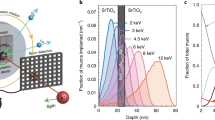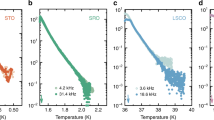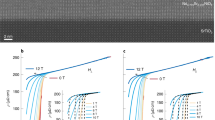Abstract
A new family of high-temperature superconductors is described, with the general formula Pb2Sr2ACu3O8+δ. Although they have the planes of CuO5 square pyramids characteristic of the other copper-oxide superconductors, the new compounds belong to a distinct structural series, with wide scope for elemental substitution. Their unusual electronic configuration also gives new insight into the role of charge distribution among the structural building blocks in controlling superconductivity.
This is a preview of subscription content, access via your institution
Access options
Subscribe to this journal
Receive 51 print issues and online access
$199.00 per year
only $3.90 per issue
Buy this article
- Purchase on Springer Link
- Instant access to full article PDF
Prices may be subject to local taxes which are calculated during checkout
Similar content being viewed by others
References
Bednorz, J. G. & Muller, K. A. Z. Phys. B64, 189–193 (1986).
Santoro, A., Beech, F., Marezio, M. & Cava, R. J. Physica C (in the press).
Parkin, S. S. P. et al. Phys. Rev. Lett. 61, 750–753 (1988).
Van Dover, R. B., Cava, R. J., Batlogg, B. & Rietman, E. A. Phys. Rev. B35, 5337–5339 (1987).
Cava, R. J. et al. Physica C (in the press).
Author information
Authors and Affiliations
Rights and permissions
About this article
Cite this article
Cava, R., Batlogg, B., Krajewski, J. et al. Superconductivity near 70 K in a new family of layered copper oxides. Nature 336, 211–214 (1988). https://doi.org/10.1038/336211a0
Received:
Accepted:
Published:
Issue Date:
DOI: https://doi.org/10.1038/336211a0
Comments
By submitting a comment you agree to abide by our Terms and Community Guidelines. If you find something abusive or that does not comply with our terms or guidelines please flag it as inappropriate.



